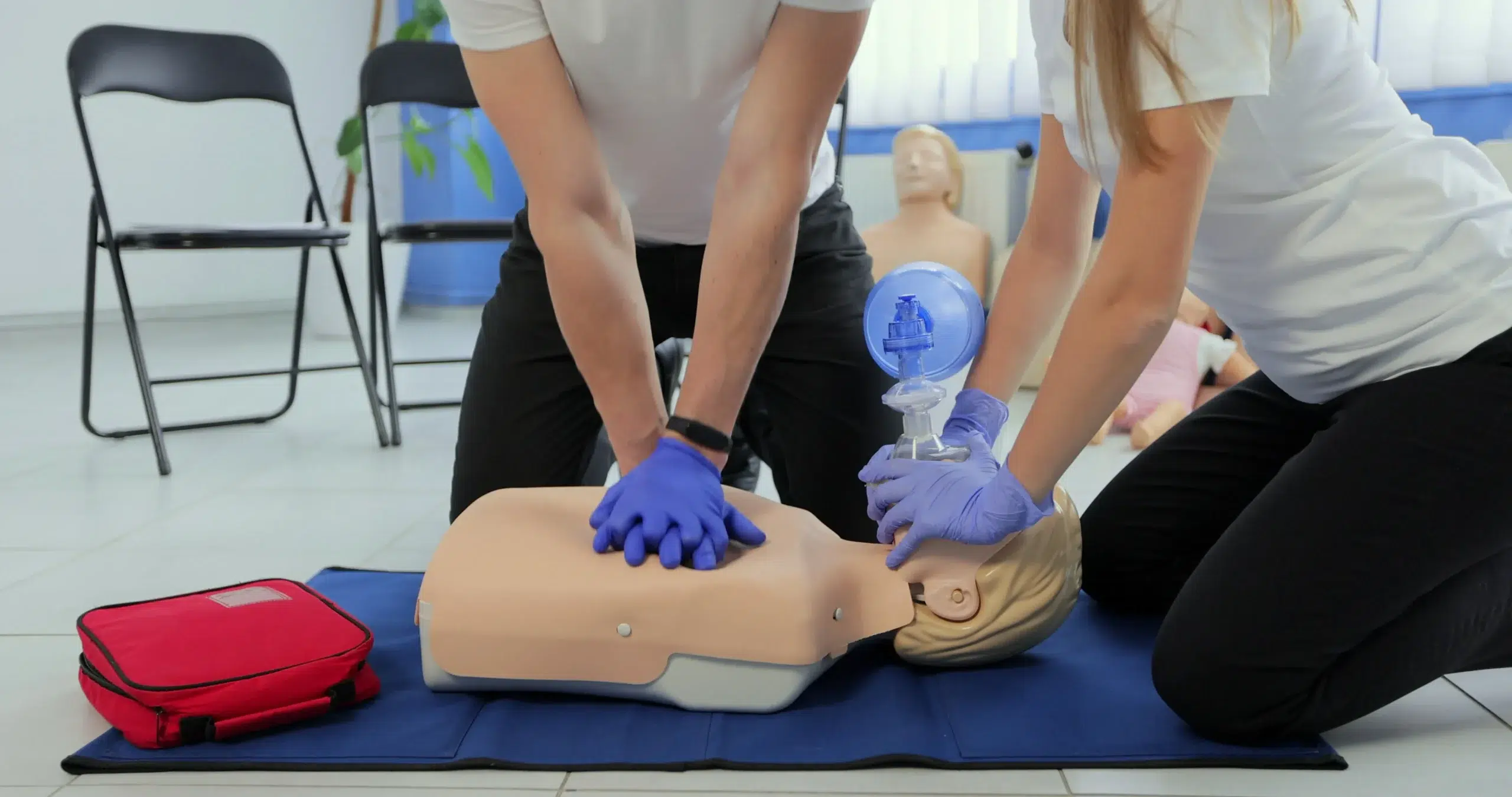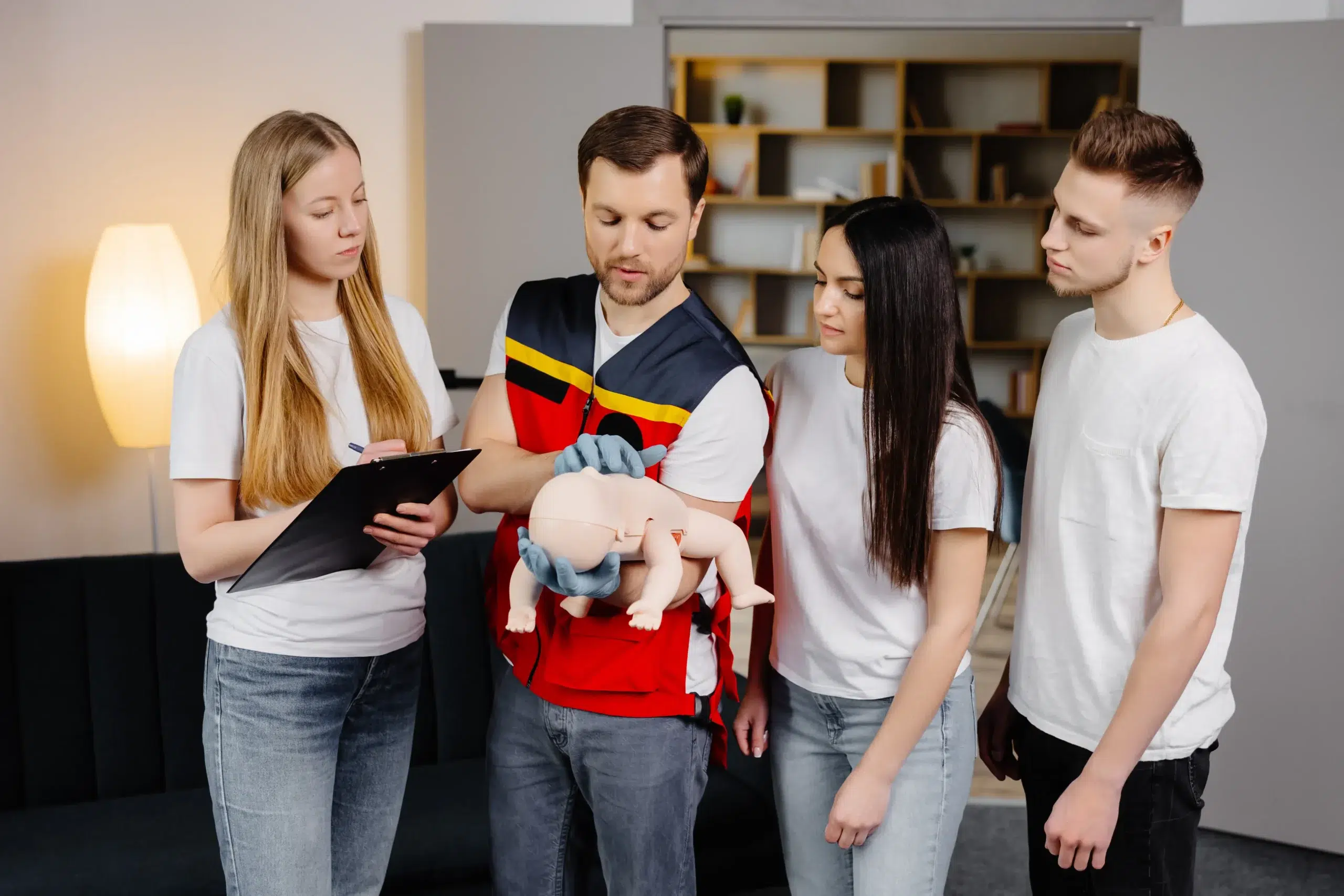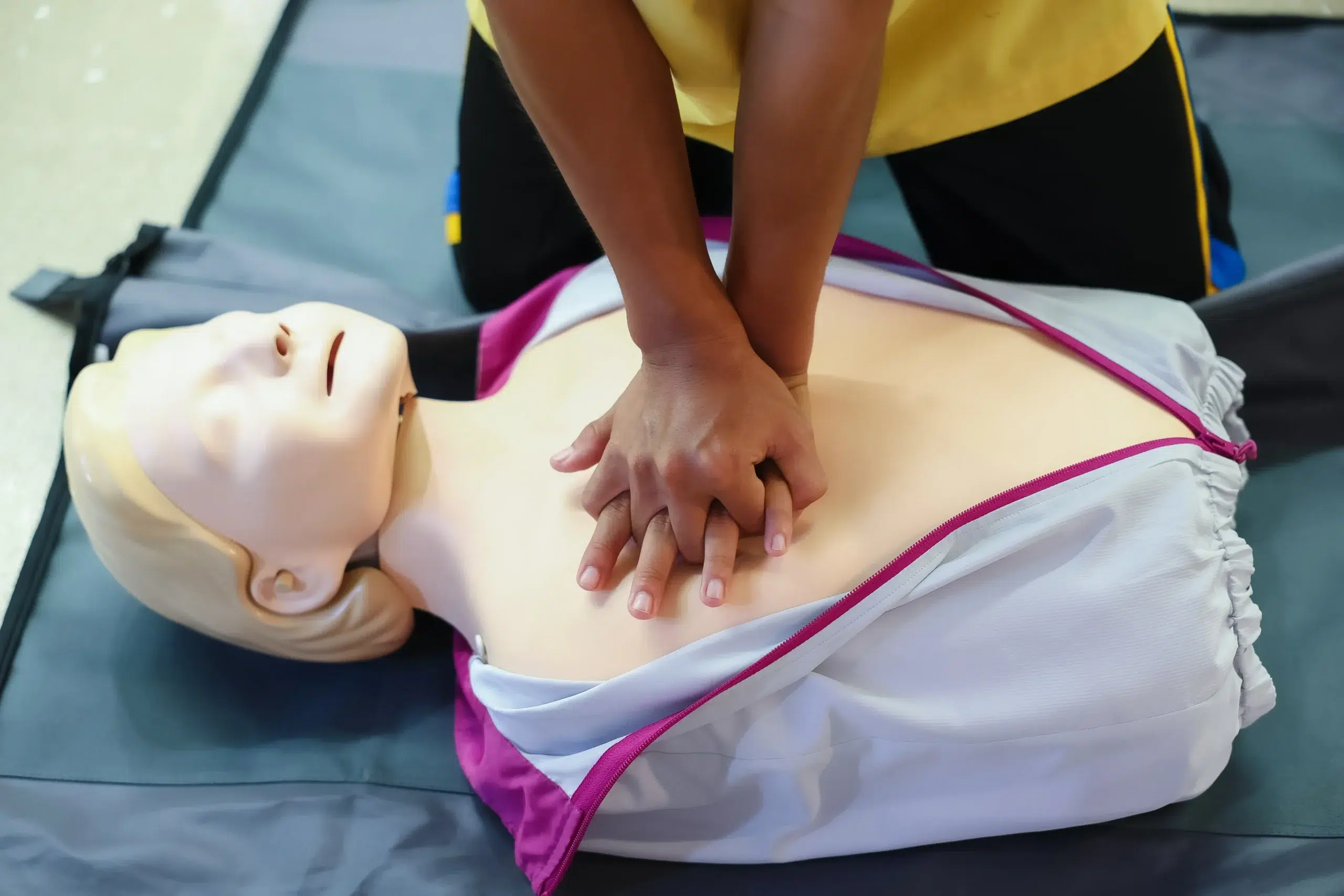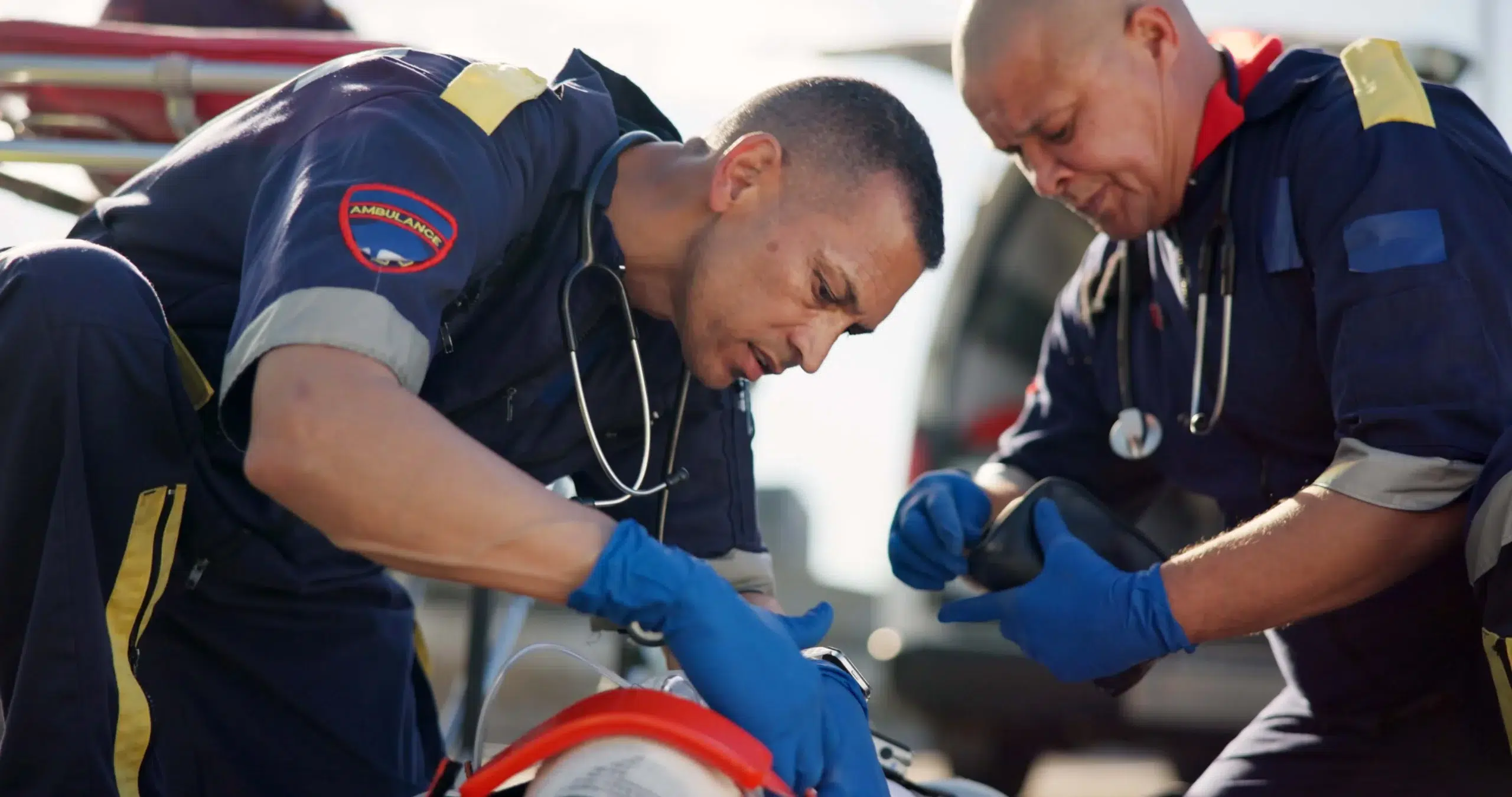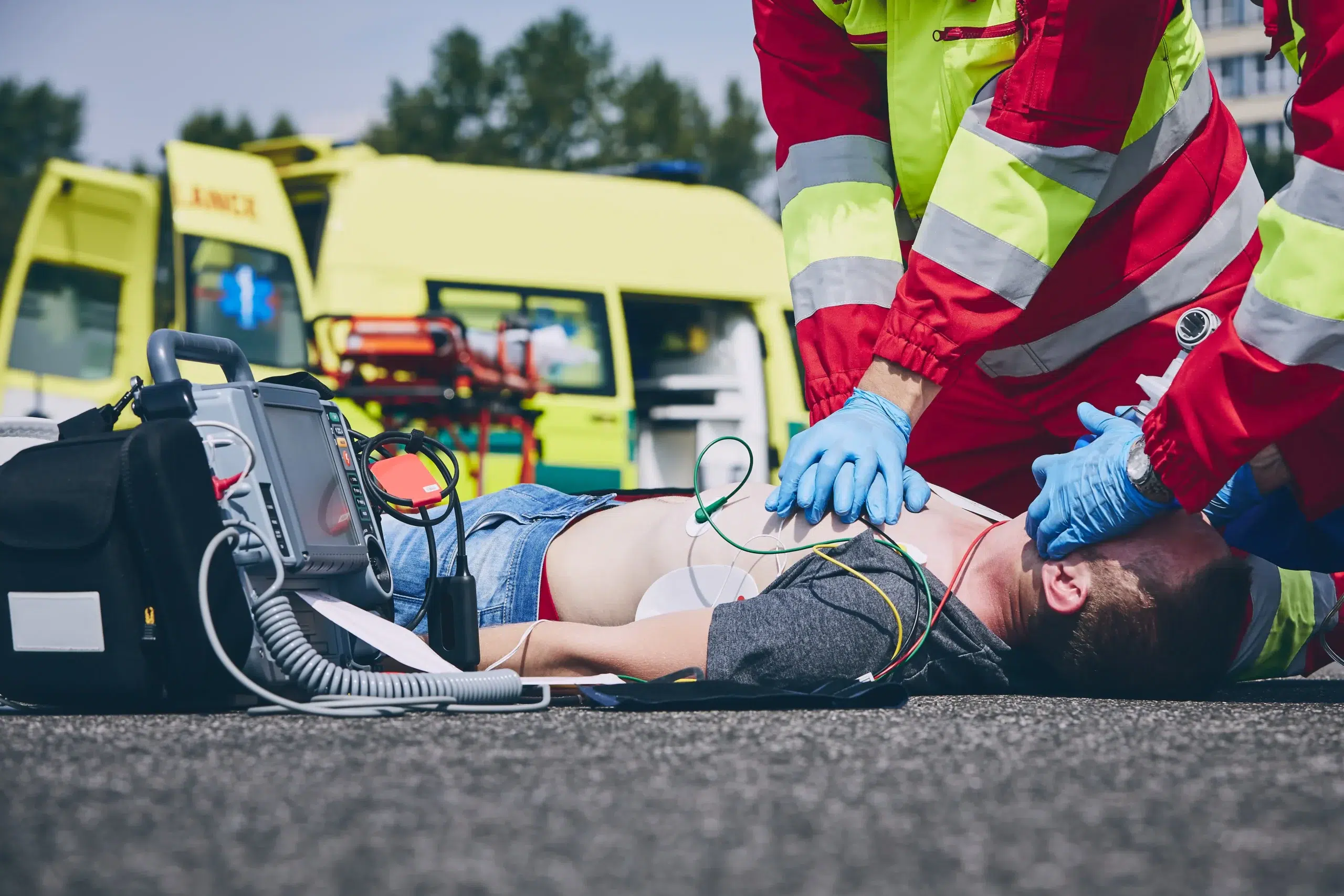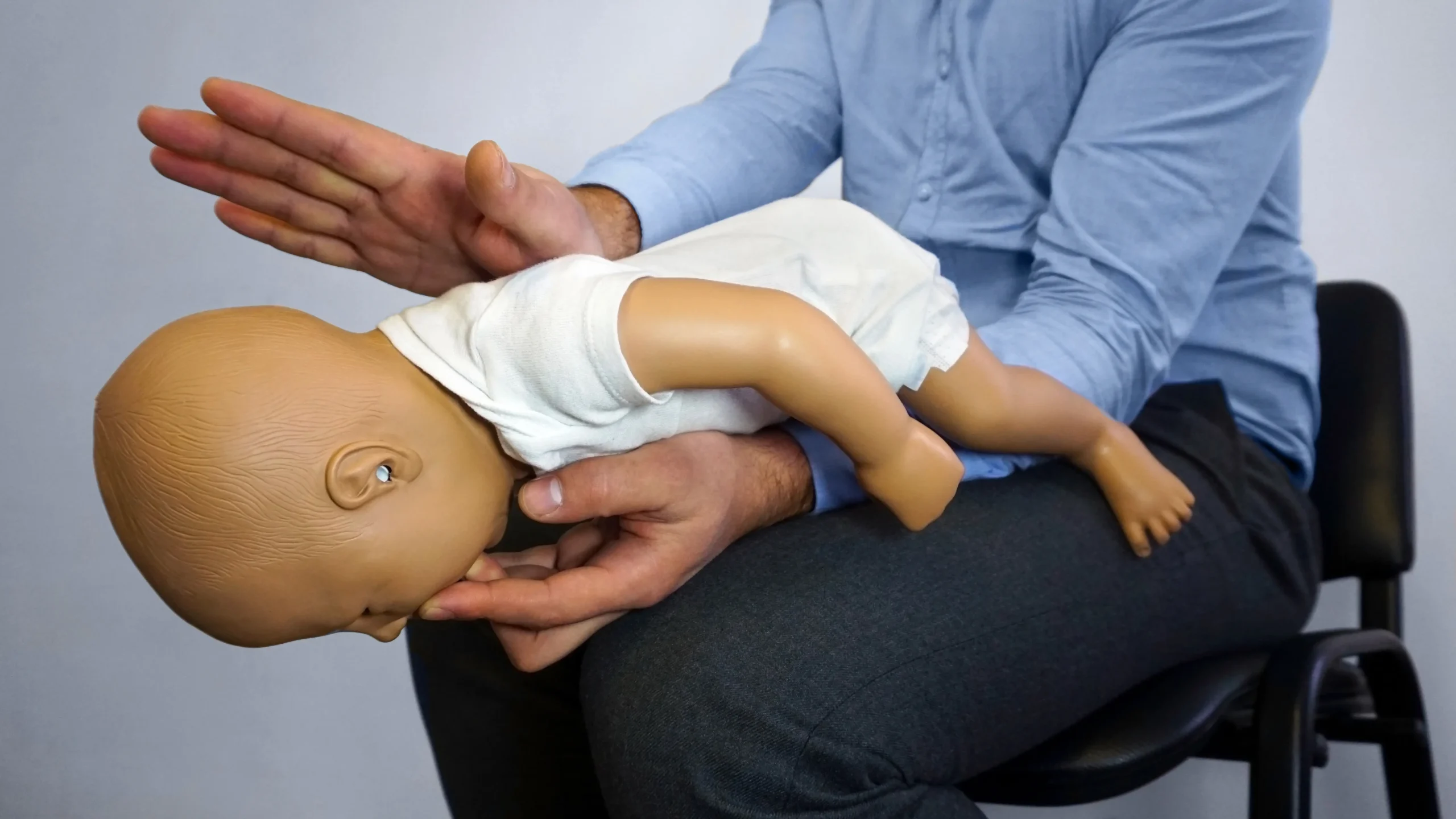Life is unpredictable, but your ability to respond to emergencies shouldn’t be. CPR recertification equips you with the skills and confidence to handle critical situations, potentially saving a life. This guide is your go-to resource for understanding CPR recertification, covering its significance, frequency, and the different types of courses available. We’ll explore how to find CPR recertification nearby, including options like the American Heart Association’s RQI program and local hospitals. Plus, we’ll debunk common myths about CPR recertification and offer practical tips for choosing the right provider. Let’s ensure you’re always prepared.
Key Takeaways
- Regular CPR recertification keeps your skills sharp and your knowledge current. Refresher courses reinforce essential techniques and ensure you’re prepared to respond effectively in emergencies.
- Find a recertification course that works for you. Explore in-person, online, and blended learning options to find a format that fits your schedule and learning preferences. Consider factors like instructor qualifications and course materials when choosing a provider.
- CPR recertification benefits everyone. Whether you’re a healthcare professional, a childcare provider, or simply someone who wants to be prepared, maintaining your CPR certification empowers you to potentially save a life.
What is CPR Recertification and Why is it Important?
CPR recertification is like a tune-up for your life-saving skills. It’s a refresher course that keeps your knowledge and abilities sharp, ensuring you’re prepared to act quickly and effectively in an emergency. Whether you’re a healthcare professional, a childcare provider, or simply someone who wants to be prepared, understanding the importance of
Stay Updated on the Latest Techniques
Medical guidelines and best practices are constantly evolving. CPR recertification ensures you’re up-to-date on the latest techniques and recommendations from organizations like the American Heart Association and the Red Cross. This includes changes in chest compression rates, rescue breaths, and how to recognize the signs of a heart attack or stroke. Staying current can significantly impact the effectiveness of your CPR efforts.
Maintain Life-Saving Skills
It’s easy for skills to fade if they aren’t used regularly. Studies show that CPR skills can decline within months of initial training. Recertification combats this by providing the opportunity to practice and reinforce these essential skills. Regular practice builds confidence and muscle memory, allowing you to respond efficiently under pressure. This consistent reinforcement is key to providing effective CPR in real-life situations. For example, did you know that CPR certification lasts for two years? Keeping your skills fresh through recertification is essential for confident and effective action.
Understand Legal and Professional Requirements
Many professions, especially those in healthcare and education, require valid CPR certification. Recertification ensures you continue to meet these requirements and maintain your professional standing. For some professions, like teachers in Indiana, CPR certification is a requirement for licensure. It also demonstrates your commitment to patient or student safety and your dedication to providing the highest standard of care. Staying certified protects you legally and shows your commitment to your profession. Check with your employer or licensing board to understand the specific requirements for your field.
How Often Should You Recertify in CPR?
CPR skills, like any other skill, can fade over time. It’s normal to feel less confident in your abilities as time passes, and research suggests less than half of people can pass a skills test a year after their initial training. This is why regular CPR recertification is essential. It keeps your skills fresh and ensures you’re prepared to respond effectively during a real emergency. Think of it as a refresher course for life-saving techniques. Recertification courses are designed to update your knowledge and skills, and they’re readily available. Once you complete a CPR class, your certification is generally valid for two years. To maintain your skills and preparedness, sign up for a renewal course before your current certification expires.
Types of CPR Recertification Courses
When your CPR certification nears its expiration date, you’ll have a few different options for recertification. Each learning format has its own perks, so think about what best fits your schedule and how you learn best.
In-Person Courses
Traditional in-person CPR courses offer a hands-on learning experience. These classes provide face-to-face instruction with a certified instructor who can give you immediate feedback and answer any questions. In-person training works well for people who thrive in interactive settings with live demonstrations. Plus, practicing your skills on training mannequins helps build muscle memory and confidence.
Online Courses
If your schedule is packed or you have limited access to in-person training, online CPR recertification courses offer flexibility. These courses cover the same essential information as in-person classes, and you can complete the coursework at your own pace, wherever you have an internet connection. Online courses often include videos, interactive exercises, and assessments to reinforce learning.
Blended Learning Options
Blended learning combines online coursework with in-person skills practice, giving you the advantages of both formats. This approach lets you learn the core concepts online at your convenience, then attend a shorter in-person session to demonstrate your skills and get feedback from an instructor. Blended learning offers a practical balance of flexibility and hands-on training.
Find CPR Recertification Courses Near You
Now that you understand the importance of CPR recertification, let’s explore where you can find these courses. Several options cater to different learning styles and schedules.
Safety Training Seminars in Newark, CA
If you’re in the Newark, California area, Safety Training Seminars offers convenient and comprehensive CPR recertification courses. As a woman-owned AHA Training Center, they provide high-quality American Heart Association courses, including BLS, ACLS, PALS, CPR, and First Aid. They offer classes daily, along with group discounts and student discounts, making it an accessible option for many. Their commitment to a low price guarantee and extended customer service hours sets them apart. Safety Training Seminars serves Newark, Fremont, and San Jose, CA. You can find more information about their CPR and First Aid certification courses on their website.
American Red Cross
The American Red Cross is a well-known provider of CPR training and certification classes across the country. They offer a range of courses designed to equip individuals with the skills to respond to medical emergencies involving adults, children, and infants. Find CPR and First Aid certification courses near you through the American Red Cross.
American Heart Association
The American Heart Association (AHA) also offers CPR recertification courses, often through certified training centers. One popular option is the RQI program, which provides a streamlined and efficient way for healthcare professionals to maintain their BLS, ACLS, and PALS certifications. You can find AHA-certified training centers near you on the AHA website.
Local Community Colleges
Many community colleges offer CPR recertification courses as part of their continuing education programs. These courses are often more affordable than those offered by private organizations and can be a good option for those looking for a budget-friendly choice. Check with your local community college for course availability and registration information.
Hospitals and Medical Centers
Hospitals and medical centers frequently host CPR recertification courses for their staff and the general public. These courses are typically taught by experienced medical professionals and provide a high level of instruction. Contact your local hospitals or medical centers to inquire about upcoming courses.
What to Expect in a CPR Recertification Course
So, you’re ready to renew your CPR certification—smart move! It’s important to keep your skills fresh. Here’s what you can expect when you take a CPR recertification course:
Course Duration and Content
CPR recertification courses are designed to refresh your knowledge and skills, so they’re shorter than initial CPR training. Expect a more streamlined, condensed format. This efficient approach focuses on key updates and reinforces your existing expertise. You’ll review the latest guidelines and procedures, ensuring you’re up-to-date on the most effective life-saving techniques. Many providers offer weekend or evening classes to accommodate busy schedules. Check with your chosen provider, like Safety Training Seminars, for specific course lengths and schedules.
Skills Covered and Assessment Methods
Recertification courses cover core CPR skills, including chest compressions, rescue breaths, and how to recognize the signs of a cardiac arrest. You’ll also review how to use an automated external defibrillator (AED). Both in-person and blended learning courses typically include a skills test. This practical exam allows you to demonstrate your proficiency and receive feedback from a certified instructor. Successfully completing the skills test and written exam earns you a new two-year certification. The American Heart Association provides detailed information on CPR guidelines and certification requirements.
Practice with Mannequins
Hands-on practice is a critical part of CPR recertification. You’ll work with training mannequins to practice chest compressions and rescue breaths. This realistic simulation helps you develop muscle memory and understand the correct depth and rate for compressions. Practicing on mannequins builds confidence and prepares you to respond effectively in a real emergency. Emergency First Response offers insights into the importance of hands-on training in CPR.
Costs and Discounts for CPR Recertification
CPR recertification costs vary depending on the provider, course type (BLS, ACLS, PALS), and your location. Understanding the general price range and available discounts can help you budget effectively.
Average Pricing
The cost of CPR recertification courses can differ based on several factors. In-person training often ranges from $75 to $150, while online recertification can be more affordable, typically between $30 and $70. It’s always a good idea to check with your chosen provider for their specific pricing. For those seeking American Heart Association certifications, the RQI program is a popular option for healthcare professionals. Safety Training Seminars offers various RQI programs that provide a streamlined path to AHA certification.
Group and Student Discounts
Many CPR training providers offer discounts for group bookings, making it a cost-effective option for workplaces or community organizations. Safety Training Seminars provides group discounts for CPR, BLS, and First-Aid certification courses. Some providers also extend discounts to students with valid identification. Contacting providers directly or checking their websites is the best way to inquire about these discounts. Safety Training Seminars offers CPR courses in Newark and other nearby cities, making it convenient for groups to schedule training. They also offer on-site training, bringing instructor-led courses directly to your business.
Seasonal Promotions
Keep an eye out for seasonal promotions or special offers that can further reduce the cost of your CPR recertification. Some providers may offer discounts during specific times of the year or run limited-time promotions. Checking providers’ websites or subscribing to their newsletters can help you stay informed about potential cost savings. You can also sometimes find coupon codes online for CPR and First Aid courses. Sites like American BLS sometimes offer promo codes for CPR/AED and CPR/BLS courses. Remember to check the terms and conditions of any promotions to ensure they apply to your chosen course and location.
Choose the Right CPR Recertification Provider
Picking the right CPR recertification provider is key to getting high-quality training that prepares you for real-life emergencies. Here’s what to consider:
Accreditation and Recognition
First things first, make sure your provider is accredited by a recognized organization like the American Heart Association (AHA). Safety Training Seminars, for example, is a woman-owned AHA Training Center, offering courses that meet the AHA’s rigorous standards. This accreditation is important because it ensures your training aligns with national guidelines and is widely accepted. You can explore our AHA-compliant CPR and First-Aid courses on our website.
Instructor Qualifications
Experienced, well-trained instructors make all the difference. Look for providers who emphasize hands-on learning with qualified instructors. This practical approach, using CPR training mannequins, helps you develop the muscle memory and confidence needed to perform CPR effectively in a real emergency.
Course Materials and Resources
Up-to-date, comprehensive materials are essential for effective learning. A good provider will use current resources and techniques, like the American Heart Association’s RQI program, to ensure you’re learning the most current methods. This program offers a modern and efficient way for healthcare professionals to get their BLS, ACLS, and PALS certifications. We also offer discounted group classes to make training more accessible.
Convenience and Flexibility
Finally, think about your schedule. Choose a provider that offers flexible options, like evening or weekend classes, or even blended learning formats that combine online learning with in-person skills sessions. This flexibility can be a lifesaver for busy professionals juggling work and other commitments. Our low price guarantee makes getting certified even easier.
Common Misconceptions about CPR Recertification
It’s easy to get confused about CPR recertification, especially with so much information (and misinformation) floating around. Let’s clear up a few common misconceptions.
Online vs. In-Person Training Effectiveness
One frequent misconception is that online CPR training isn’t as effective as in-person training. Actually, studies suggest online learning can be just as effective, or even better, for some. Online courses let you learn at your own pace and review material whenever you need a refresher, which can be a huge advantage. Of course, in-person training offers hands-on practice and immediate feedback from an instructor. The best option depends on your learning style and preferences. If you learn best in a traditional classroom setting and value direct interaction with an instructor, in-person training might be a better fit. If you prefer flexibility and the ability to learn at your own speed, an online course could be ideal. Consider what works best for you and choose the format that will help you absorb the information most effectively.
The Necessity of Recertification
Another misconception is that you must have CPR certification to perform CPR in an emergency. While having up-to-date CPR training is always recommended, you are not legally required to have a certification to help someone in a life-threatening situation. However, keeping your CPR skills sharp through recertification is crucial. Studies show that CPR skills can decline significantly within a year after initial training, making refresher courses essential for providing effective assistance when it matters most. Regular CPR renewal ensures you can confidently and competently respond to emergencies. Think of it like any other skill—practice makes perfect. Regular recertification helps maintain muscle memory and keeps the steps fresh in your mind so you can act quickly and effectively under pressure.
Who Needs CPR Training
Many people hesitate to learn CPR due to fears about doing it wrong or causing further injury. Some are also reluctant to perform mouth-to-mouth resuscitation. These concerns are understandable, but it’s important to remember that any attempt to help, combined with CPR knowledge, significantly increases the chances of survival. Even if you’re unsure about the specifics, your willingness to act and basic understanding of CPR can make a real difference. Don’t let fear prevent you from learning this life-saving skill. CPR certification can benefit everyone, from healthcare professionals and childcare providers to parents, teachers, and even students. Knowing CPR empowers you to potentially save a life in a critical situation. Check out our low price guarantee and find a CPR class that fits your budget. We offer a variety of courses, including BLS courses in Newark, to meet your specific needs.
Find Convenient CPR Recertification Courses
Finding the right CPR recertification course doesn’t have to be a hassle. With a little research, you can find a course that fits your schedule and budget. Here are a few ways to find convenient recertification options:
Check Local Organizations
Start by checking with organizations like the American Red Cross and your local American Heart Association chapter. They frequently offer various CPR and first-aid classes, including recertification courses, designed for different learning styles and schedules. Many also offer group discounts, a great option if you’re recertifying with colleagues. For those in the Newark, CA area, Safety Training Seminars provides convenient and affordable options.
Use Online Search Tools
Online search tools can be incredibly helpful. A quick search for “CPR recertification near me” can reveal several options, from in-person classes to online or blended learning programs. You can also use websites like the American Heart Association’s course locator to find certified training centers in your area. Remember to check reviews and compare prices to find the best fit.
Explore Community Resources
Think about your local community resources. Community centers, hospitals, and even some fire departments often offer CPR recertification courses. Your local YMCA or community college might also be a good resource. These options can be more affordable and offer the convenience of learning in a familiar environment. For example, the Indiana Department of Education mandates CPR training for teachers, highlighting the value of these skills and the availability of resources within the community.
Benefits of Local vs. Online CPR Recertification
Choosing between online and in-person CPR recertification depends on your learning style and schedule. Both options offer valuable training, but in-person classes provide distinct advantages, especially when mastering hands-on skills.
Hands-on Practice Opportunities
In-person CPR recertification gives you a chance to practice on training mannequins. This hands-on experience builds confidence and addresses common concerns about performing CPR correctly. It’s one thing to watch a video, and another to feel the proper depth of compressions and practice the technique in a safe environment. This physical practice is invaluable for retaining information and reacting effectively in a real emergency. At Safety Training Seminars, we provide ample opportunity for hands-on practice during our courses.
Get Immediate Feedback from Instructors
Certified CPR instructors can give you real-time feedback on your technique. They can correct mistakes, answer your questions, and offer personalized guidance. This immediate feedback is crucial for developing proper form and ensuring you’re prepared to respond confidently in a real-life situation. Online courses may offer feedback, but it often lacks the immediacy and personalization of an in-person instructor. Our instructors at Safety Training Seminars are dedicated to providing individualized attention and support.
Network with Other Professionals
In-person CPR courses offer a chance to connect with other professionals in your field or community. These CPR courses can be valuable for sharing best practices, learning from others’ experiences, and building relationships with colleagues. This shared learning environment can enhance your understanding of CPR and create a sense of community among like-minded individuals. Consider joining one of our classes to expand your professional network.
Related Articles
- CPR Renewal in Newark: Your Complete Guide – Newark CPR Classes
- CPR Certification in Fremont: A Complete Guide
- Why CPR Is Critical in Saving Lives
- The Science Behind Effective CPR: A Comprehensive Guide
- BLS Recertification Near Me: Your Guide – Newark CPR Classes
Frequently Asked Questions
How long is CPR certification valid? CPR certification is typically valid for two years. It’s important to recertify before your certification expires to maintain your skills and ensure you’re up-to-date on the latest guidelines.
What are my options for CPR recertification? You have several options for CPR recertification, including in-person courses, online courses, and blended learning programs that combine online learning with in-person skills practice. Choose the format that best suits your learning style and schedule.
Why is hands-on practice important for CPR? Hands-on practice with training mannequins allows you to develop muscle memory and gain confidence in performing CPR correctly. It also helps you understand the proper depth and rate of compressions, which is crucial for effective CPR.
Where can I find CPR recertification courses near me? You can find CPR recertification courses through organizations like the American Red Cross and the American Heart Association. Local community colleges, hospitals, and medical centers also often offer these courses. If you’re in the Newark, CA area, Safety Training Seminars provides a variety of CPR recertification options.
What if I don’t have time for an in-person CPR class? If you have a busy schedule, online CPR recertification courses offer a flexible alternative. These courses allow you to complete the coursework at your own pace, from anywhere with an internet connection. Just be sure to choose a reputable provider that offers high-quality online training.
